In Rome, the Domus Aurea reopens June 23, and it does so with a new lighting system and a new entrance for the public designed by architect Stefano Boeri, but above all with the first exhibition set up in the Sala Ottagona. It is Raphael and the Domus Aurea. Linvenzione delle grottesche (until Jan. 7, 2022), curated by Vincenzo Farinella and Alfonsina Russo with Stefano Borghini and Alessandro D’Alessio, an exhibition designed for Raphael’s 500th anniversary in 2020: is an immersive exhibition dedicated to the rediscovery of ancient painting and grotesques in the Domus Aurea in the late 15th century: the discovery of those forgotten ruins was one of the most significant events of the time, since grotesques would later become a common decorative motif in 16th-century art.
The story of the rediscovery of grotesques began around 1480, when some painters (among the first were Pinturicchio, Filippino Lippi and Signorelli) descended into the hollows of the Oppio hill to go and admire the pictorial decorations of ancient Roman dwellings: they thought they were in front of the frescoes of the Baths of Titus and instead they were unknowingly discovering the ruins of Nero’s palace, the Domus Aurea that the emperor had built after the fire of 64 AD. The term “grotesques” (derived from the fact that the paintings found decorated the “grottoes” of the Domus Aurea) first appeared in 1496. And it would have been Raphael himself who popularized this decorative motif, first employing it in Cardinal Bibbiena’s Stufetta (1516) and then, again in Bibbiena’s apartment in the Apostolic Palace in the Vatican, in the Loggetta (1516-17), before the great cycle of the Vatican Loggias (1517-1519).
The project Raphael and the Domus Aurea. Linvenzione delle grottesche promoted by the Archaeological Park of the Colosseum and produced by Electa, intends to tell precisely leccezionale story of the rediscovery of ancient painting buried in the caves of Nero’s original Domus Aurea, recounting the history and art of one of the most famous architectural complexes in the world, which marked and influenced, with its discovery, lyconography of the Renaissance. The interactive and multimedia exhibition design is by the Milan-based Interaction and Exhibit Design studio Dotdotdot. The exhibition is developed, as mentioned, in the Octagonal Hall, a masterpiece of imperial Roman architecture, but also in the five neighboring rooms, as well as the Rooms of Achilles at Scyrus and Hector and Andromache, still preciously frescoed and where traces of ancient grotesques can be admired. The multimedia language alternates between immersive videomapping that reconstructs Raphael’s works, animations, digital sets that tell anecdotes about the artists of the 16th century, generative art and morphing, archives and digital collages of grotesque decorative elements, and surrealist deployment.
In the Sala Ottagona, astrological images deduced from the globe supported by theFarnese Atlas, an exceptional loan from the National Archaeological Museum in Naples, are projected onto the dome. Suetonius, in the Life of Nero, records that in the Domus Aurea the most memorable banquet hall was round and rotated on itself all day long, continuously, like the earth. To evoke this coenatio rotunda (which in all likelihood was not located at the pavilion on the Colle Oppio and whose exact location archaeologists still debate) a rotating projection of astrological images inspired by the globe in the famous Farnese Atlas has been created on the vault of the Sala Ottagona. These are alternated with the projection of a fall of rose petals as Suetonius described occurred during the Emperor’s banquets. At set times, the videomapping dissolves as natural light effects from the central pod simulate the transition from day to night. Just a few minutes, that will allow visitors to appreciate the extraordinary daytime effects imagined and realized by the architects of Nero Severus and Celerus.
In the first room, one will find fantastic half-human and half-vegetable animals, phytomorphic motifs, harpies and musical instruments, beaded vases, palmettes that are among the decorative motifs that chased each other in the Domus Aurea and that are discovered by some artists present in Rome around the year 1480. The visitor himself triggers this narrative by moving his body, simulating the reverberation of the flame of flashlights, used at the time of Raphael to illuminate the underground rooms of the Domus Aurea. With a single gesture, the ancient grotesque is transformed, through morphing, into a Renaissance motif proper to those artists who first discovered a world of fantastic and unknown images. The second room is devoted to Raphael’s study and reinterpretation of grotesques. Flanked by pupils and collaborators, around the middle of the second decade of the sixteenth century, Raphael would carry out the first real systematic study of these ancient wall decorations, capable of enabling him to re-propose them organically as a global decoration of rooms specially designed in an antiquarian key. The spectacular centerpiece of this nucleus (and thanks to an agreement of the Colosseum Archaeological Park with the Vatican Museums) is the multimedia reproduction of the Stufetta del Bibbiena: the tiny private bathroom of the cardinal’s apartment created in 1516 to a design by Raphael. On each wall, the grotesques of the Stufetta (not visible to the public because they are not part of the Vatican Museums’ visiting itinerary) zoom in and out, generating unprecedented effects of scale and highlighting the most significant details of the entire decorative cycle. In the third room, an audio narrative recounts the memorable discovery of the Laocoon, the sculptural group found in 1506 in an underground space, which was located in the same area as the Neronian palace. In a videoloop, copies and declinations over time of this sculpture morph against the background of the plaster cast of the Laocoon, a loan from the Palazzo Albani museum in Urbino that restores all the limponence of the original. A play of light then recreates the primary destination of this room, decorated with a cascading fountain.
In the fourth room, an interactive console (a metaphorical window on the world) allows visitors to admire and explore multiple places, in Italy and Europe, decorated with grotesques from the 16th century and up to the 19th century. From the Uffizi Galleries, with their kilometer-long frescoes capable of varying allinfinity and actualizing Roman archaeological models, to the residence of the Duke of Bavaria Louis X in Landshut, built beginning in 1536 and exemplified on the Mantuan Palazzo Te; from the Peinador de la Reina, erected around 1537 at the behest of Charles V in the Alhambra of Granada, to the Gallery of Francis I at Fontainebleau (c. 1532-1539), pandering to the estri of Rosso Fiorentino and Primaticcio. The fifth room is devoted to modern declinations of grotesques, which also fascinated great artists of the 20th century, particularly the leading exponents of Surrealism such as Victor Brauner, Salvador Dali, Max Ernst, Joan Miró and Yves Tanguy. A hemisphere, containing sets animated by monstrous beings also created by these exponents of modern art, allows visitors to play and create ever-changing dreamlike digital collages. Enriching the experience is a sound design project created in sync with the visual and interactive project, which is also sensitive to the movement and intensity of the audience. The musical background is enriched with sounds and noises that emphasize the content and architectural features of each environment. Songs of muses and magical voices accompany video projections of the vault of heaven, while cavernous noises, reverberations, whispers, drips, and distant echoes contribute to the evocative potential of the Neronian palace. Video projections and sound thus merge into a mesmerizing light and shadow performance that simulates the transition between day and night every 30 minutes, dematerializing the exhibit and revealing the scenic beauty and architectural power of the Octagonal Hall and surrounding spaces.
The exhibition is accompanied by a catalog published by Electa, which traces the rediscovery of the Domus Aurea and the invention of the grotesques thanks to Raphael’s extraordinary impulse.
“The Domus Aurea,” comments Culture Minister Dario Franceschini, “is enriched today by a contemporary architectural intervention by Stefano Boeri, which demonstrates how quality contemporary interventions can be made that serve a function and are perfectly reconciled with the protection and preservation of the heritage of the past. It is another great opportunity to enrich our cultural heritage in a place that is symbolic for all of Italy and the world. In just over a month, the G20 meeting of culture ministers will open inside the Colosseum. This is a way to show that Italy also invests in the future on the basis of the grandeur of what the generations before us have done. The Domus Aurea is a stupendous place, now we have to make it stupendous outside, there is a problem called the park of Colle Oppio. We are also ready as the Colosseum Archaeological Park to take over the management of the park of Colle Oppio within the Colosseum Archaeological Park because that would be the way to make it, as it should be, one of the places most connected to the Colosseum in all its splendor, not instead in the degradation that in some parts is really embarrassing and badly reconciled with the splendor of the Domus Aurea and the Colosseum.”
“After more than 1 year of closure we are reopening the Domus Aurea,” says Alfonsina Russo, director of the Colosseum Archaeological Park. “Thanks to specific funds from the Ministry we are overcoming some critical issues, such as water infiltration. In the path you can see sculptural and architectural elements enhanced by the new lighting created by Erco, which re-proposes the expedients used by Neronian architects to capture light even in the darkest spots.”
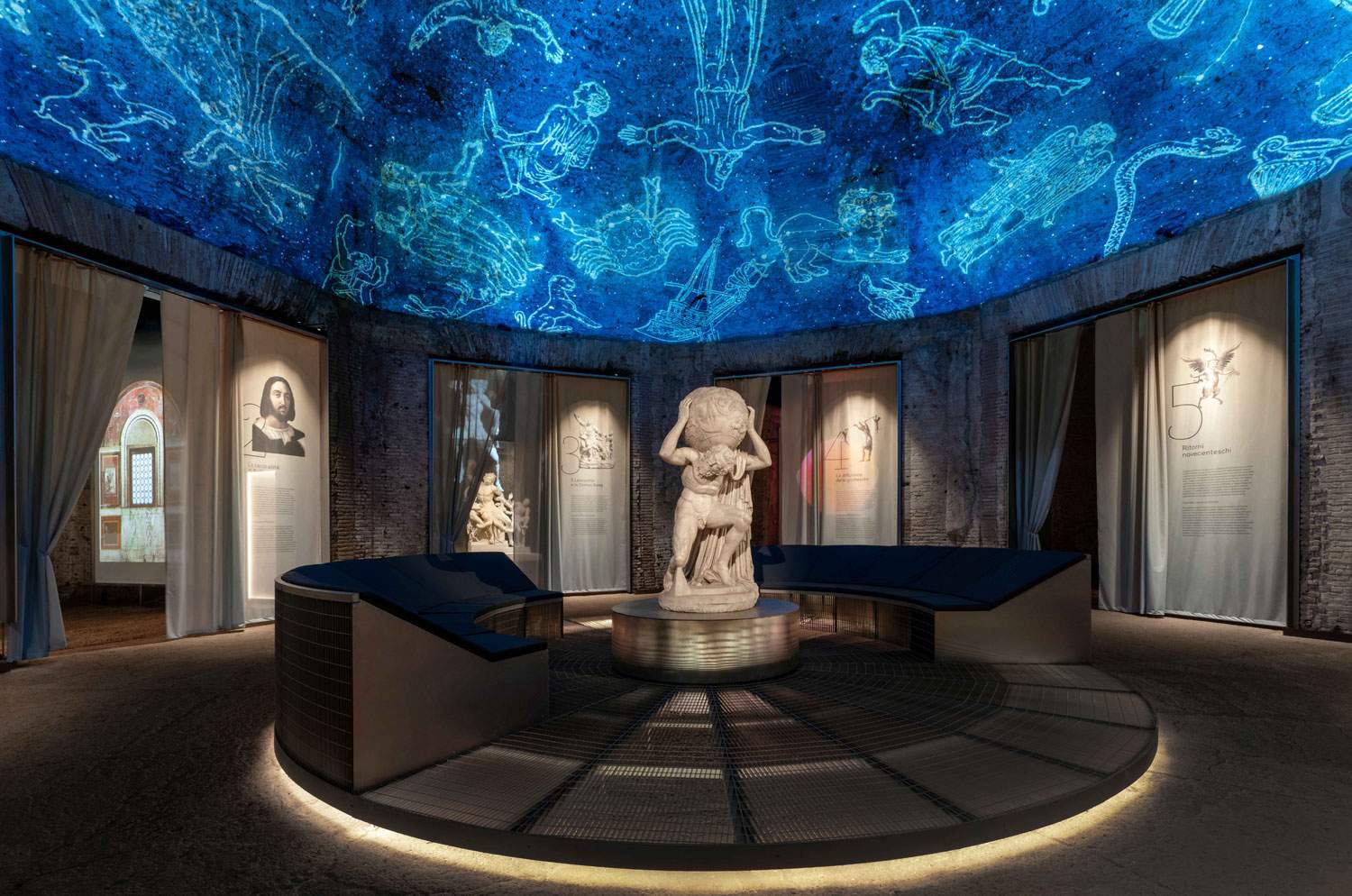 |
| Exhibition Raphael and the Domus Aurea. Invention of the Grotesques. Credits: Staging and Interaction Design by Dotdotdot. Photo by Andrea Martiradonna. © All rights reserved Dotdotdot |
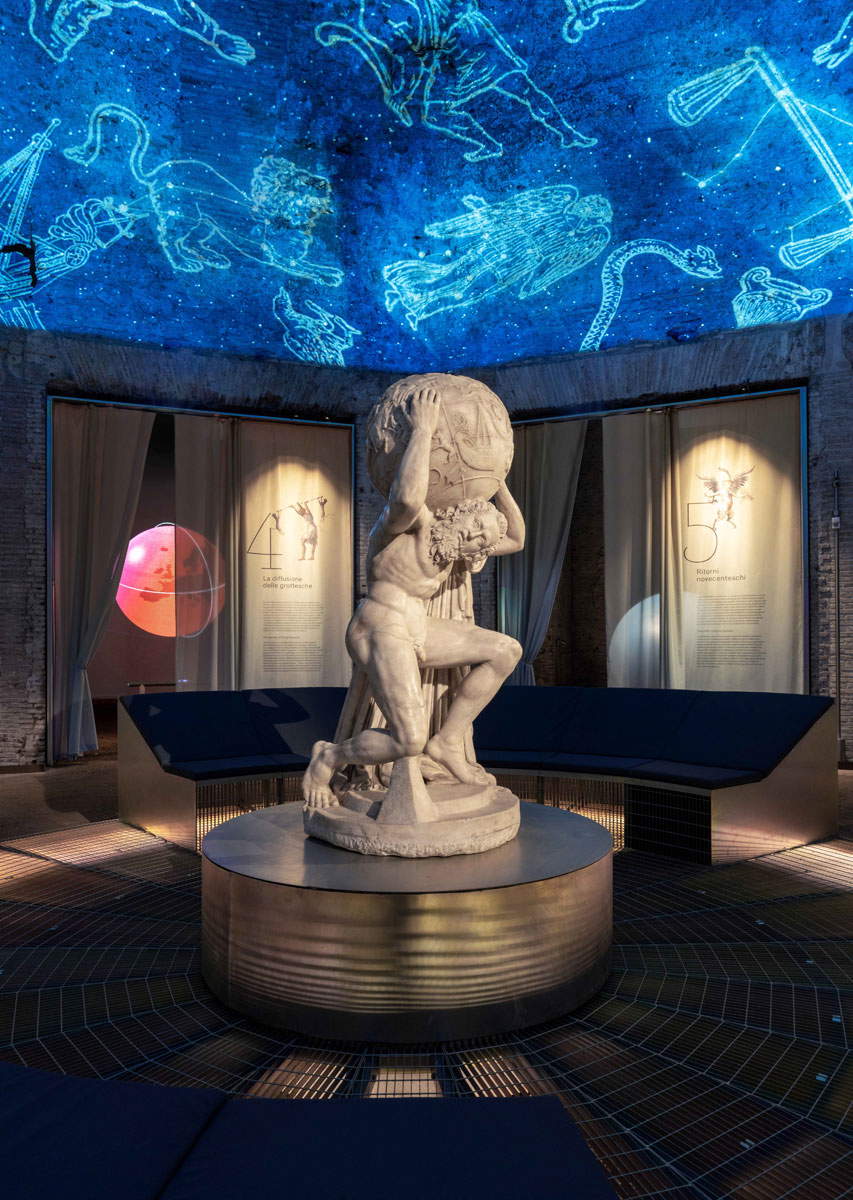 |
| Exhibition Raphael and the Domus Aurea. Linvenzione delle grottesche. Credits: Exhibition design and Interaction Design by Dotdotdotdot. Photo by Andrea Martiradonna. © All rights reserved Dotdotdot |
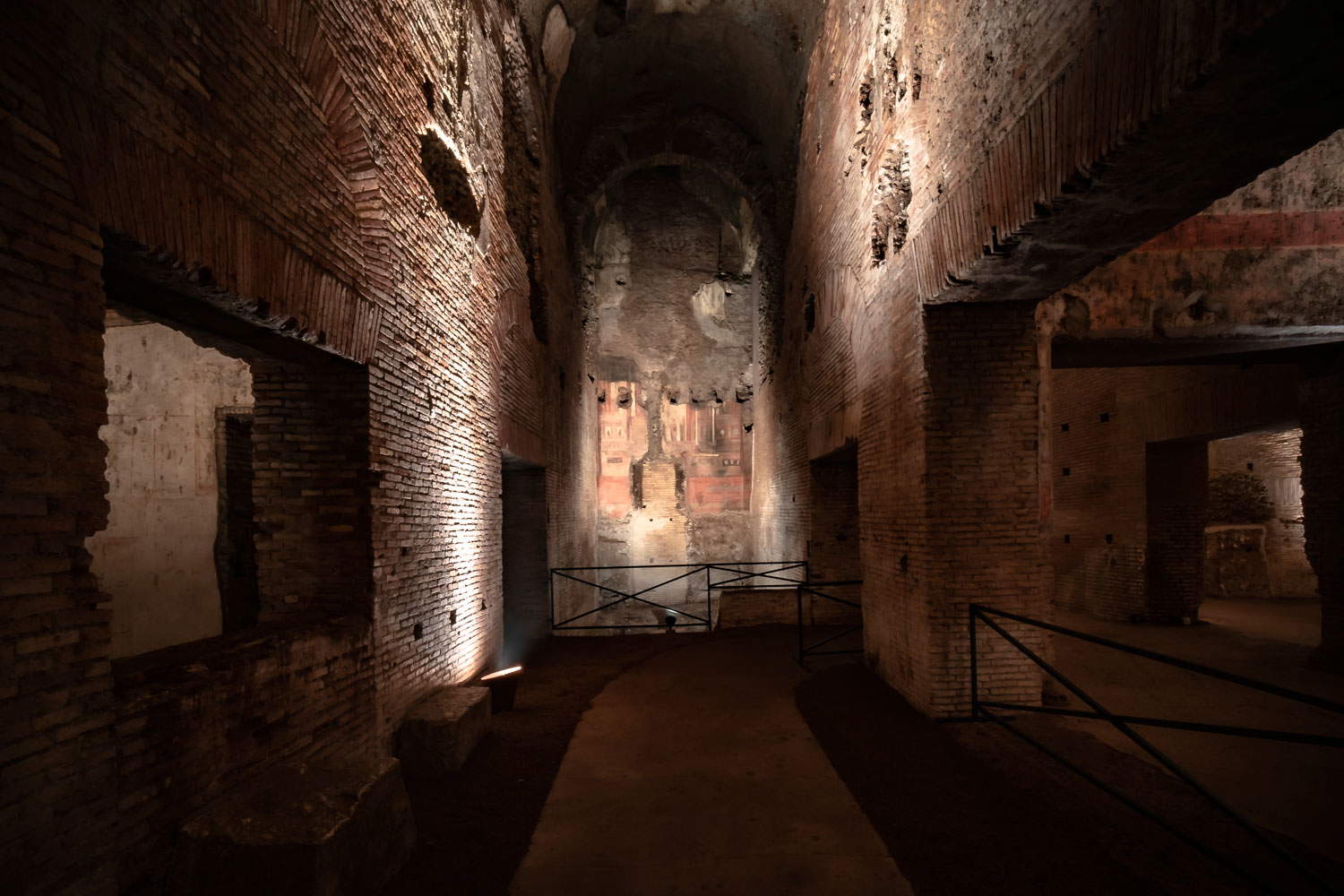 |
| Rome, Domus Aurea. Colle Oppio Pavilion. Room 53. Credits: ©ph ERCO lighting. |
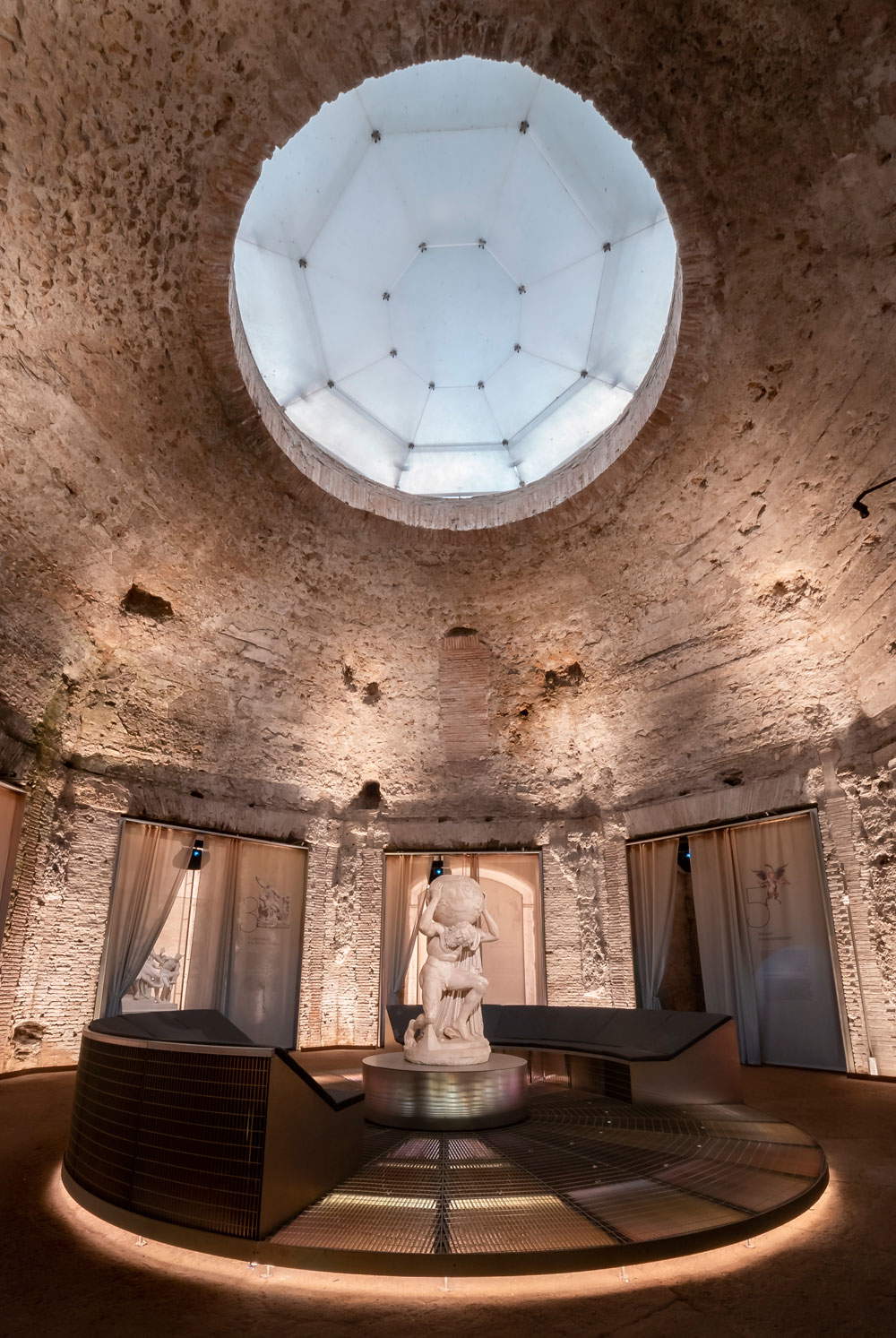 |
| Rome, Sala Ottagona set up with the sculpture of the Farnese Atlas. Domus Aurea. Credits: ©ph ERCO lighting. |
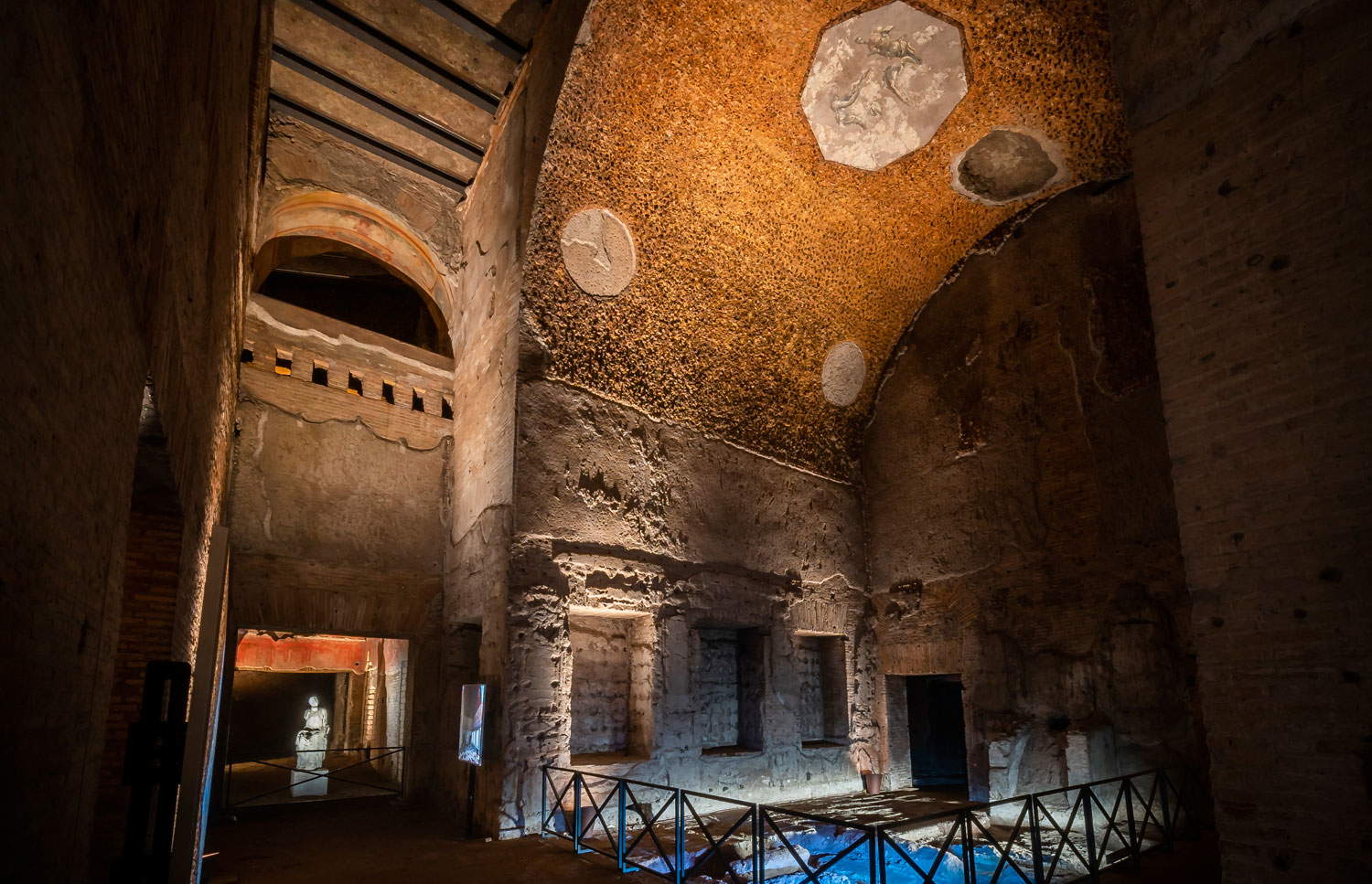 |
| Rome, Domus Aurea. Colle Oppio Pavilion. Room 45. Credits: ©ph ERCO lighting. |
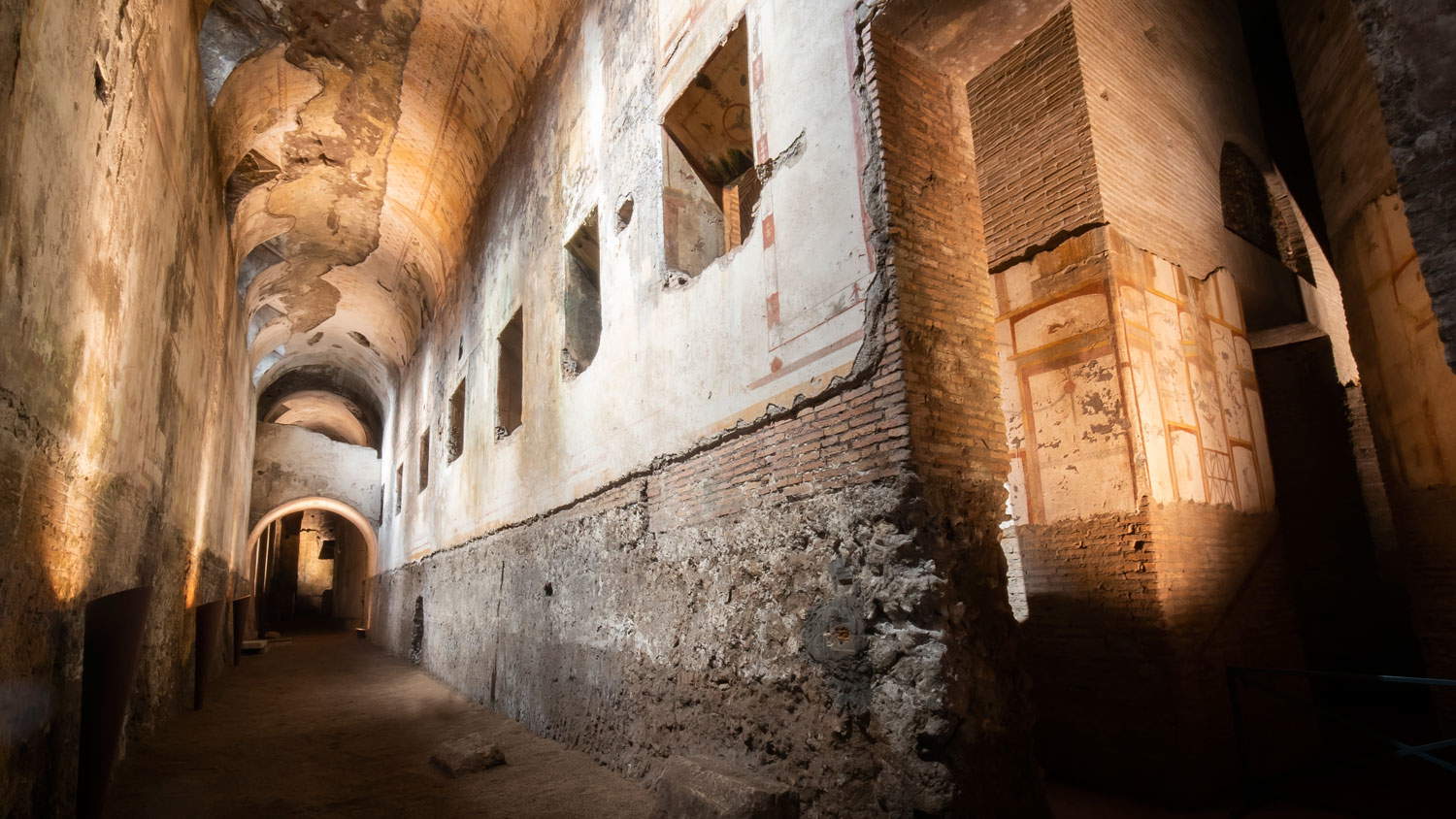 |
| Rome, Domus Aurea. Opium Hill Pavilion. Great Cryptoporticus 92. Credits: ©ph ERCO lighting. |
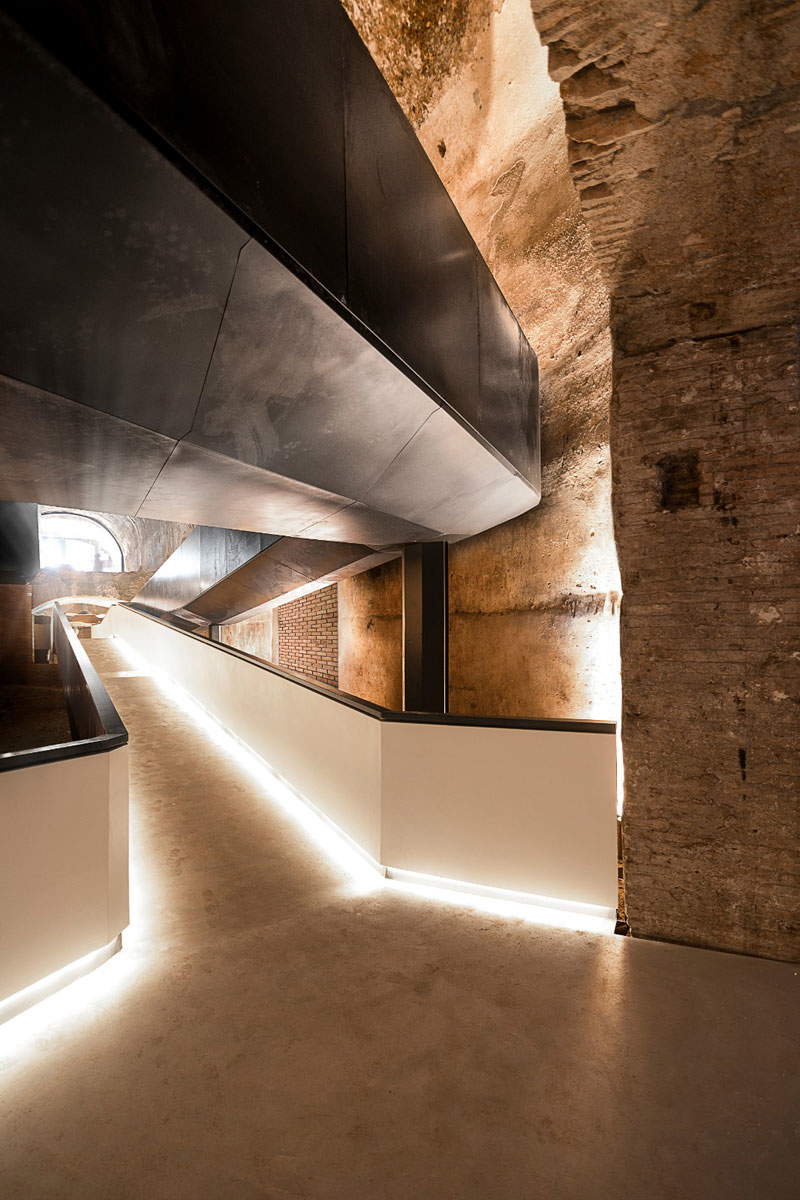 |
| New Domus Aurea entrance, Rome. Stefano Boeri Architects. Credits: ph. Lorenzo Masotto |
 |
| Rome, Domus Aurea reopens, with new entrance and grotesque discovery exhibition |
Warning: the translation into English of the original Italian article was created using automatic tools. We undertake to review all articles, but we do not guarantee the total absence of inaccuracies in the translation due to the program. You can find the original by clicking on the ITA button. If you find any mistake,please contact us.